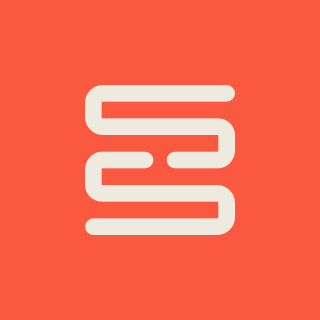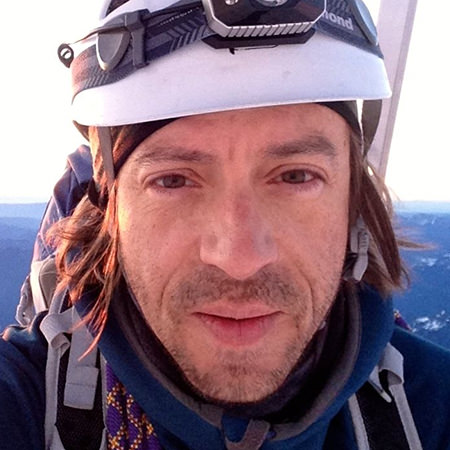Photo of me demonstrating my expert management skills with one of my designers.
When I was in college there was no such thing as UX design. There wasn’t even a career in web design. As far as I know, these things just didn’t exist. All that mattered to me was becoming an amazing graphic designer like Paul Rand or Milton Glaser. Back then, the pinnacle of success would have been my design work featured in Communication Arts magazine. I spent hours drooling over the beautiful elegant designs featured in those glossy pages.
Despite my commitment to my amazing future career, I started teaching myself HTML and CSS while I was still a student. My thought at the time was to use web design as a resume builder, something to help me get jobs. This seemed like a good way to fill out a portfolio and make myself more valuable to potential employers.
I graduated in 2000 Summa Cum Nothing and started my illustrious graphic design career – with a small military contractor in DC. It was totally lame. We marketed products and services between military and civilian entities. I made the best of it and did the best work I could. I learned from my senior designer from the experiences that were presented to me. It was a good job and I was lucky that they took a chance on me.
I did get the chance to do one web design project when I was there. That glorious project included a search field. I embellished the search field with a small picture of a guy holding a metal detector. It was my corny way of saying, “He’s searching for something. Get it?” Yeah.
In 2001, in the DC area one of the most terrible things happened in US history. I am of course talking about 9/11. That awful experience gave us all pause for thought. It also made economic conditions worse than ever in that area. Inflation was already running high and we knew that we needed to find a more family-friendly economy. So, in late 2001 we returned to Utah.
I was fortunate to find work with an athletic wear manufacturer. I did more marketing, advertising, trade show, and display graphics. I created fonts, catalogs, mailers, and photo shoots. I even wrote limericks. We did an entire catalog all in limericks. Let’s hope that’s never found.
As anyone who has ever worked for a start up knows, things can be very unstable. This athletic wear company was no different. Occasionally paychecks would bounce. The owner was really just flying by the seat of his pants. It was a fun ride, but didn’t have a great future.
Once again, I made the best of it. I got my first chance to work with Flash and ActionScript. I did a lot of design work and tried to improve myself with every project.
These efforts were not limited to the office. At home, I also continued to teach myself web technologies and how to design for them. I discovered that my Apple computer came with a copy of the Apache server on it. I discovered CGI and the blogging software Movable Type and WordPress. I discovered blog design. Most importantly I discovered Jeffrey Zeldman.
Zeldman was teaching the world about Web Standards, CSS, and table-less layout. I poured myself into this world. It was a magical and exciting time for me. I loved the immediacy of creating a design or writing a blog post and being able to see it published immediately. So different from the world of print production processes that took expensive multi-million dollar equipment to create. I could create the stuff by myself at home on my own computer and publish it for the whole world to see. Of course, the whole world didn’t exactly see it, but that didn’t matter to me. To me it was amazing and exciting.
I spent more and more of my time both at home and at work learning how to design for the web. At the same time, I started looking for a new job. The devil-may-care attitude at work was wearing thin - I wanted to know that my paycheck wasn’t going to bounce. One of the places I wanted to work most was my alma mater - BYU.
Earlier, as a design student, I worked on campus as a designer for a campus marketing agency. I loved the mentoring that I received from the professionals working there. As I considered my next job move, I decided I wanted to be a mentor too. I eventually got a job as the web designer for the BYU University Library. What had started out as a side pursuit to help me get jobs (learning HTML, CSS, and web design), had in fact become the job. Now web design was all I did. And a university library was depending on me to do it very well. I don’t know if they realized how much trust they had placed in an untested web designer, but I took the job and loved it.
I worked hard. Soon, my boss asked me to hire student employees to help with the work. And my career as a mentor began. I built a small team that eventually included full-time design professionals as well as student interns and employees. It gave me great joy, not only to serve the university community, but also to provide the students with the opportunities needed to become professionals.
I worked for BYU for four years. I loved the work and my team, but at the four-year mark, I began to feel the need to move on.
I didn’t want to move on. I was really happy there. I was close to home. I had great tools. It was challenging and there was a lot of work left to do.
At the five-year mark, I got a clear impression from God that I needed to quit my job. It was scary to leave a good job, but I knew God would take care of me and my family. At the end of 2010, I quit my job and started a new adventure.
This turned out to be a great blessing. I worked for three years as an individual contributor as part of a large enterprise. I worked on native mobile apps, mobile web applications, and other great projects. Many of these tools were translated into multiple languages. I was learning to design for international audiences. I worked on bigger teams than I ever had before. I had to learn how to work with developers, product managers, QA engineers, and myriad stakeholders.
This was my first time working with experienced and talented UX designers. They shared insights with me and encouraged me. They gave me critical feedback. They gave me what I needed to become a user experience designer.
One of these people was a user experience manager. He took a job in another department and he put my name in as his replacement. I was very humbled and grateful that he did that, but I didn’t feel qualified yet for the job. I knew it was a great opportunity even to interview. I applied and went through the interview process.
Amazingly, I got the job! Once again I was in way over my head. Apparently, I am ‘wont to swim in deep waters’. And once again, I dug deep and worked hard to support my team and maintain a high bar of excellence. I learned to organize and conduct user tests, to conduct user interviews, to observe users, and to make and test prototypes. We made a lot of journey maps. And I really learned how to hire. I learned what to look for. I learned how to tell who is and isn’t ready.
In the four years since then, I’ve learned what it takes to become a user experience manager. I’ve interviewed dozens and dozens of designers. I’ve helped many of them on their journey to a successful career. It is so rewarding to be a part of their journey.
March 2, 2024
It’s been seven years since I wrote the story above. This was originally written by me as a chapter of a book. As is the fate of many books, the manuscript was never completed. Even this portion ends abruptly. My apologies.
I am posting this incomplete version now in the hopes that it will benefit others. Grit, mentoring, and divine intervention are still a daily part of my life and career. I’ve made a million mistakes and have been blessed with a handful of shining moments where I know I made a difference. May your design adventure be just as rewarding, challenging, and meaningful.





